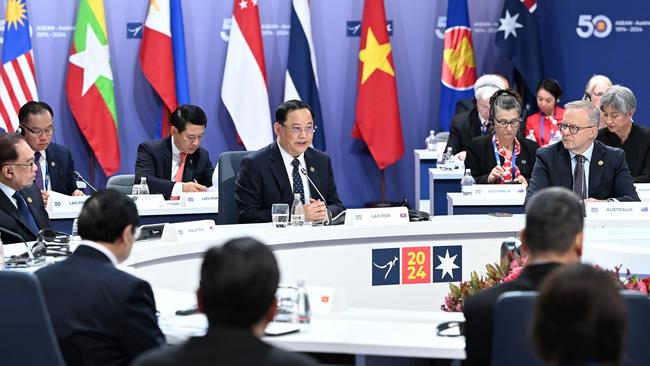Business gets serious about Southeast Asia
Historically, Australia has been geographically isolated from the world’s major economic hubs, relying on our relatively small population to drive the economy. That situation has changed.

Last week government and business leaders from across Australia and Southeast Asia met to discuss how to further catalyse the two-way commercial and investment opportunities between Australia and one of the fastest growing regions in the world.
That the Australia ASEAN Business Forum so closely follows the historic ASEAN-Australia Special Summit in March tells us the government’s ambition for our role in Southeast Asia is matched by the business community’s willingness to engage with the region.
A strong and active economic corridor between Australia and Southeast Asia is an economic imperative. Historically, Australia has been isolated from the world’s major economic hubs, relying on our relatively small population to drive the economy.
Now, the situation has changed. Australia sits just 500km from the region that will become the world’s fourth-largest economy by the end of this decade, thanks to a booming, youthful population which will drive consumption to $US4 trillion by 2030 and embrace digital technologies and other new economy sectors.
Southeast Asia has already become a innovation powerhouse brimming with digital economy companies. Its digital economy is set to reach $US600bn in value within six years.
In parallel to its rising consumer power, the region is benefiting from long-term geopolitical trends which are re-organising global supply chains.
In recent years, our business community has undergone a shift in perspective, and now more than ever before understands the critical role our neighbouring countries’ rising global prominence will play in their growth ambitions.
While the road map for business growth is clear, it’s time for action. Connectivity with the business communities of Indonesia, Malaysia, The Philippines, Singapore, Thailand and Vietnam will not manifest in and of itself.
The question is no longer whether to enter the region but how. There are several levers that Australia’s business and investor community must, and can, pull.
First, it pays to go deeper than Southeast Asia’s statistics by examining the opportunities on a country-by-country basis.
An example is the recently signed Memorandum of Understanding between Malaysia and Singapore, to develop the Johor-Singapore Special Economic Zone which will boost a range of sectors, including manufacturing. Australian business must be alive to developments of this kind.
Second, our business community needs to adopt the playbook for successful commercial penetration; nothing can supplant simply having boots on the ground to understand the market and show intent to your in-market commercial peers.
Beyond trade, foreign direct investment will be a critical lever in gaining commercial traction and this is certainly an area where Australia can add unique value.
As their populations swell, ASEAN member states will need to spend a lot of money to build the critical infrastructure which will support their people.
Currently, there is a $US3 trillion gap in the region’s infrastructure investment funding; between now and 2040, bridging this gap will require an average annual spend of $US210bn.
Meanwhile our $3.9 trillion superannuation savings pool is faced with the tricky ongoing challenge of finding investments large enough to warrant capital deployment, and the region’s funding priorities of transport, renewable energy transition and data centres align well with their investment mandates.
Deploying capital into greenfield projects in Southeast Asia is complex, with several regulatory, construction, land and customer demand risks afoot.
This is where the government’s support is so critical. The $2bn Southeast Asia Investment Financing Facility will soothe some of the concerns of our large investors and guarantee Australian investment into ASEAN projects.
If executed well, the commercial multipliers will be significant.
Australian companies in a range of industries, including professional services, engineers and logistics, will gain the confidence to enter these markets and build supply chains around targeted multibillion-dollar and multi-generational asset investments.
This is not just an idea; we already have a playbook from past Australian investments in the US, Britain and Canada, which have spurred wider business investment in these markets.
Antony Shaw is CEO of HSBC Australia and New Zealand and chair of the Business Council of Australia’s global engagement committee.






To join the conversation, please log in. Don't have an account? Register
Join the conversation, you are commenting as Logout